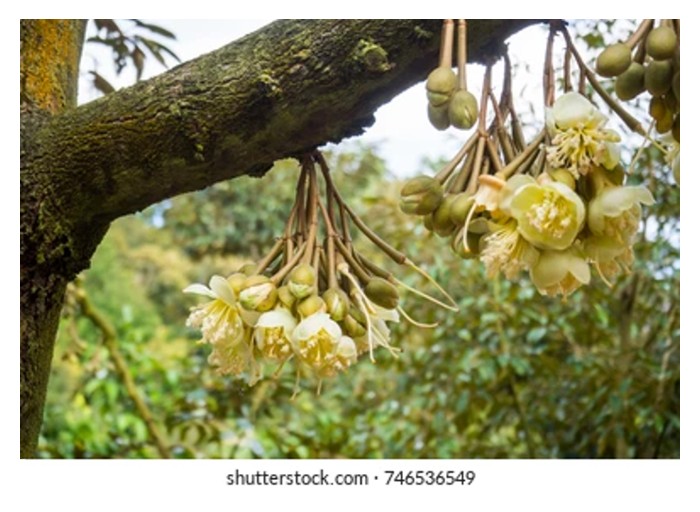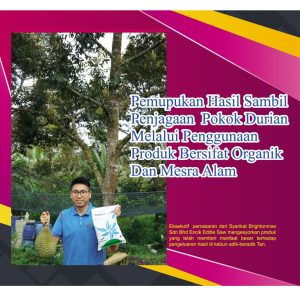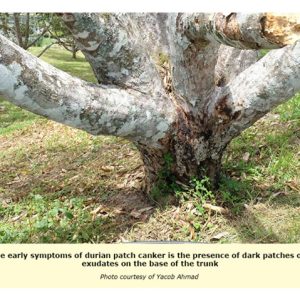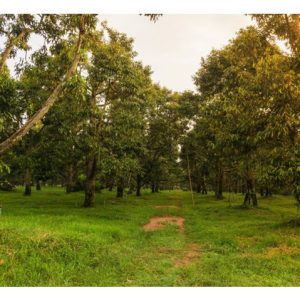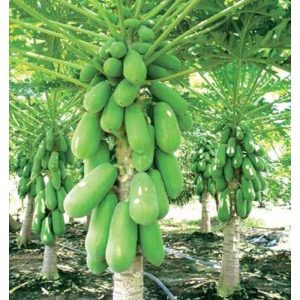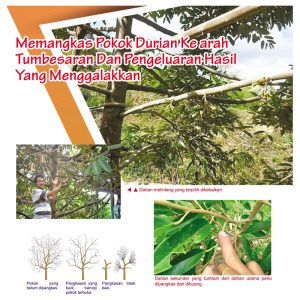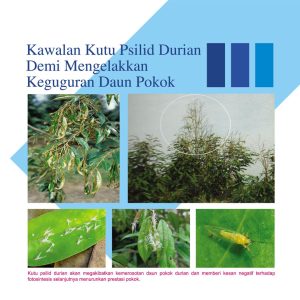Careful thinning of durian flowers/inflorescences can increase the proportion of fruitlets that develop into harvestable fruit and also produce fewer but bigger, heavier fruits. Below the scientific evidence, the physiological why, and the practical trade-offs.
What the science shows
Classic field trials on Durio zibethinus (cv. Mon Thong) found that flower thinning at full bloom significantly increased percent fruit set and that very heavy thinning (leaving only ~10% of flowers) led to a higher number of fruits actually harvested per tree. Flower thinning also increased fresh fruit weight and overall yield in those trials.
More recent cultivar-level work (cv. ‘Puyat’) comparing no thinning vs. 25% and 50% thinning reported that heavier thinning tended to produce fewer initial fruitlets but a higher number of marketable fruit at harvest, with the thinned treatments producing heavier fruits with larger circumference and pericarp weight. In short: you lose small/poor fruitlets early but keep the good ones to maturity.
Field experience and reviews of durian biology also note that growers commonly thin clusters to 2–5 flowers per cluster specifically to improve size and uniformity — a practical confirmation of the experimental findings.
Why thinning works (the physiology, in plain language)
Plants have a limited pool of sugars, nutrients and hormones to share among developing sinks (fruitlets, roots, shoots). When too many flowers are pollinated, all of them “compete” for those resources. Removing (thinning) many flowers early shifts a larger leaf-to-fruit ratio and reduces sink competition, so the remaining fruitlets receive more assimilates during the critical early cell-division and expansion phases. This increases the chance a given fruitlet will survive drop, grow faster, and end up larger at harvest. These source–sink effects are well documented across fruit species and apply to durian as well.
Timing matters: thinning at or soon after full bloom targets the period when cell division and sink competition are most influential, so bloom/full-bloom thinning often gives better gains in size than very late thinning.
Practical trade-offs and cautions
- Fewer fruitlets = fewer potential fruits, so if pollination was poor (few flowers actually pollinated), over-thinning can reduce harvest. The durian studies suggest heavy thinning works when overall pollination is adequate.
- Cultivar and environment matter. Results vary by cultivar (Mon Thong, Puyat, Musang King behave differently) and by weather/pollinator activity, so don’t blindly copy percentages.
- Labor vs benefit. Manual thinning is laborious; some growers thin selectively (per cluster) to balance labor and gain.
- Quality vs quantity. Thinning tends to increase size and uniformity; effects on eating quality are mixed and often small.
Bottom line (farmer friendly)
If your orchard has good pollination and you want bigger, more uniform durians, select early bloom thinning (e.g., reduce flower numbers per cluster or leave ~10–25% of flowers in experimental trials) and monitor the first 2–3 weeks of fruitlet drop. Scientific trials back this approach: it raises percent fruit set of the remaining flowers and shifts yield toward fewer but heavier, more marketable fruits.
Source: Professional Platform
Note: For Reference Only

